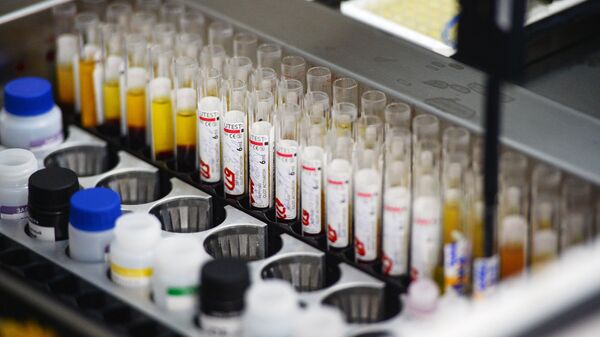“Emtricitabine, ritonavir, darunavir” — it sounds like magic spell from a Harry Potter book, but it’s in fact a life-saving formula. It’s one of several triple-drug combinations currently prescribed by doctors to treat patients with HIV.
Thanks to this “AIDS cocktail” life expectancy of HIV patients has risen dramatically. In the early 1980’s, when the deadly virus caught the Western world by surprise, most HIV patients quickly developed AIDS and died within months. But in the new millennium things changed.
Here’s what John Frater, a professor at the University of Oxford said at a recent Royal Society of Tropical Medicine and Hygiene event broadcast on YouTube:
“We’re telling our patients, who are newly diagnosed, and are going to the therapy at the right time, that unless they have any other major conditions their life expectancy should be the same as if they were HIV-negative.”
But that doesn’t mean that the virus has been defeated. It remains in the human body, and usually comes out of hibernation if the therapy is stopped. Nevertheless, scientists have observed at least two instances where HIV was eliminated — the so-called “Berlin Patient” cases.
One person who remains anonymous, and a man named Timothy Ray Brown were cured by doctors in Germany in 1998 and then a decade later, in 2008.
Timothy Ray Brown, who had leukemia and HIV, received a stem cell transplant from a donor who was naturally HIV-resistant, and that killed both his cancer and the deadly virus.
But, according to John Frater, attempts to replicate the method failed, as six other patients with conditions and treatment similar to the famous Berlin Patient died.
“This is not a straightforward thing. This is an example out there on the periphery, that you can cure HIV if you take every possible risk that you can imagine… Yes, it proves the principle to the virology crowd that you can cure it if you get all the conditions right, but you're so far out there in terms of the spectrum of what you can do, that it’s not something that you can take forward.”
With more than $20 billion spent worldwide on HIV response annually, doctors, researchers, governments and international organizations are hoping to put an end to the epidemic. And as there’ve been no major breakthroughs in recent years other than the “Berlin Patient” case, the search for a cure continues, giving hope to millions of HIV patients, who are waiting for the day when their disease will finally be gone.


